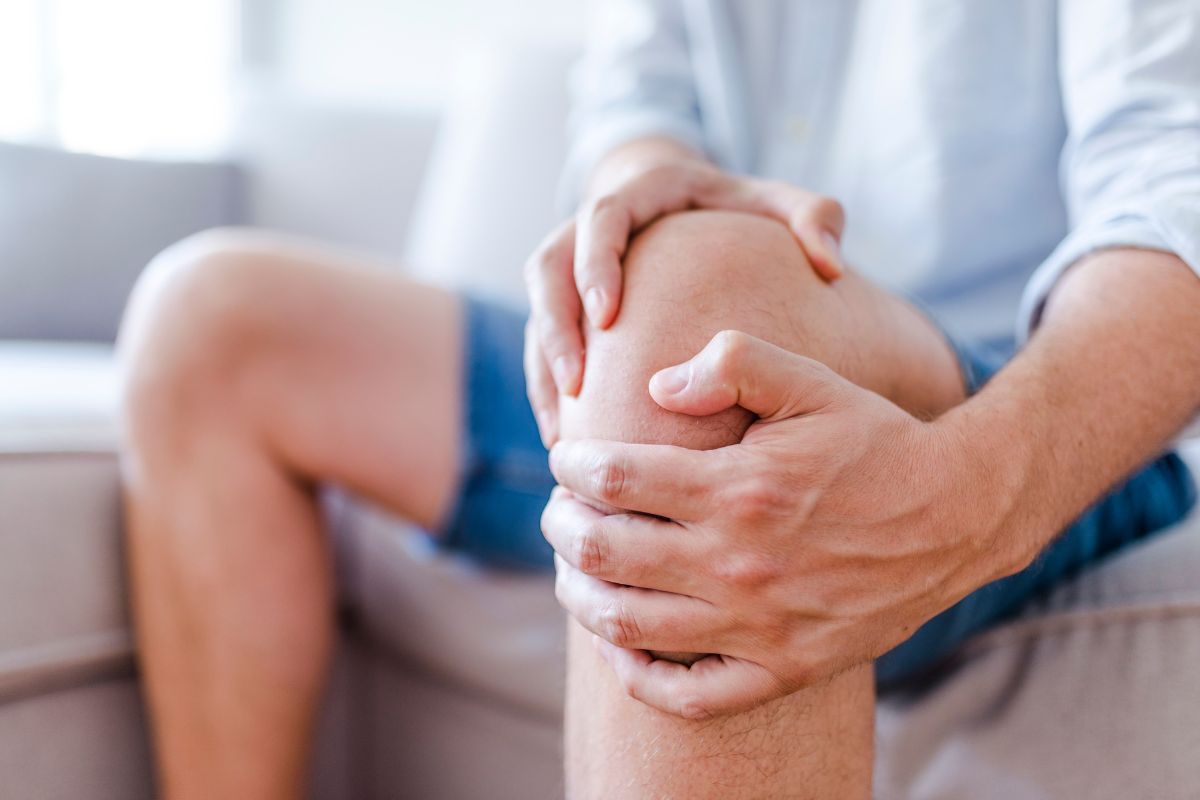Gout is a quite painful but very common form of inflammatory arthritis.
It can be quite hard to pin down exactly what it is when you first feel it, however if you feel the occasional painful flare up in one particular joint that happens over a prolonged period, then you may have gout.

There is no need to be alarmed as luckily there are ways you can effectively treat and manage the condition through a few self help methods that can mitigate the pain by a huge amount.
Of course it is also vital to notice any symptoms you may have so that you can go to a doctor or so you can prepare to reduce some of the intense heat and swelling yourself.
Here is everything you need to know about gout, including all of its symptoms.
What Is Gout?
Gout is a painful form of arthritis that is caused from your body possessing too much uric acid which then forms small crystals in a joint.
This causes swelling and intense heat and pain in that limb that can last from a few moments to a few days and is called a ‘gout attack’.
The primary part of the body gout attacks are most common is the big toe, however it can spread to any other limbs in the body including but not limited to the knees, ankles, feet and wrists.
Gout is considered an inflammatory form of arthritis because it inflames the joints which is what creates the uncomfortable burning feeling whenever it flares up.
While gout can attack and flare up in a part of the body, it can sometimes go weeks, months or even sometimes years without attacking again, so looking for symptoms and the best ways to control it and prepare for the next attack are vital for mitigating the intense pain it causes.
Who Can Get Gout?
Anyone can be affected by gout, though it is most common in men especially those over 30.
Men are the more common victims because they usually have higher levels of uric acid while women only reach those levels after menopause.
The factors that will increase the chances of a person getting gout include:
- Congestive heart failure
- Obesity
- Diabetes
- Hypertension
- Kidney disease
What Are The Main Symptoms For Gout?

Gout can be easily recognised by the experience of having a gout attack in one of the limbs that can be intensely painful and warm.
If you feel this particular pain and want to make sure if it is gout or just a regular muscle pain, here are the main symptoms to look for after or during an attack:
Intense Pain
As mentioned before, gout can easily be recognized by the intense pain felt in one of the joints.
This pain is often described as a rapid onset of sharp strikes one after the other with an attack usually lasting 5 to 7 days.
Redness And Swelling
Gout is also known to swell the joints so another key symptom is if you spot a patch of redness and notice that the part of the body has become swelled up and won’t recover, this is a big indication the joint may be affected by gout.
Stiffness
Gout will also cause stiffness in the part of the body which is experiencing the pain.
If it affects your big toe for example it can sometimes feel a bit harder than usual to move it around, or with a knee it can be harder to bend down if you have gout, so always test out the flexibility of your joints as it can be another clear indicator as to whether gout is affecting you.
Warm Or Burning Feeling
Gout attacks are also characterized by a hot, warm or even burning feeling in a part of the body.
This is a lot different to muscle pain and is very uncomfortable to have to endure.
Some ice or a wet tea towel will be able to ease this burning sensation for a little while if you find you do have this feeling somewhere in the body.
Are There Ways To Treat Gout?
If you find that you have a few of these symptoms in some area of the body then you might have gout without even realizing this.
If you have previously been undiagnosed then it is best to visit a doctor who will provide some medicine to numb the pain a little along with conducting an X-ray to see how much uric acid is built up in the body and how to limit this.
Gout however is a long term disease that cannot be fully cured, but can be controlled to a point where when an attack happens, the burning pain is nowhere near as intense.
The main method of controlling gout and preventing the attacks happening so often is exercising and eating a balanced diet.
By exercising, you reduce the body which in turn gets rid of a huge amount of uric acids that is stored primarily in fat rather than muscles.
Cardio based exercises are best for this as they are some of the quickest ways of reducing body fat in a quick period.
Editing your diet slightly can also be a great way to manage gout, water especially is a great way to prevent uric acid stones forming and should always be a go to refreshment rather than sugary drinks.
Exchanging meat and seafood for other protein based foods like yogurt and cheese can also stop crystals forming.
Medicines that lower uric acid that have been prescribed to you will also help fight against gout attacks in the future, allopurinol is the main one commonly prescribed also known as Zyloric and Uricto.
Summary
While gout is painful it can luckily be picked up on quite easily, so if you do find you have any of these symptoms including a constant sharp pain, swelling and a burning sensation, make sure to take the necessary steps to mitigate attacks as much as possible in the future.
- Understanding Male Reproductive Health: A Complete Guide - February 2, 2025
- Simple Healthy Skin Habits for Radiant Skin - December 6, 2024
- Unlocking the Connection Between Nutrition and Mental Health - December 3, 2024








